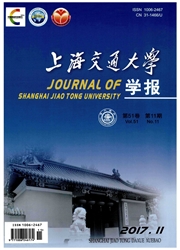

 中文摘要:
中文摘要:
为了研究随机扰动下电力系统强迫振荡的特点,基于同步机机械功率上随机扰动的功率谱密度模型,为多机系统建立了模态叠加形式的频率响应模型.由功率谱密度分析方法得到了同步机功角的功率谱密度表达式,进而分析了随机扰动下系统强迫振荡的4个影响因素.在新英格兰39节点系统上比较了不同随机扰动的激励下同步机功角的随机振荡情况.结果表明,当随机扰动功率谱密度的峰值频率和系统固有频率一致时,发生随机意义上的共振现象.发生随机共振时,同样强度的随机扰动,谱密度峰度越大系统振荡越剧烈,而随机扰动的峰值频率在固有频率附近、扰动谱密度峰度较小时更容易激起系统强迫振荡.
 英文摘要:
英文摘要:
In order to study the forced power oscillation under stochastic disturbance, the mechanical power disturbance of synchronous machine was described by power spectral density (PSD), and the frequency re- sponse model of power system in the form of modal superposition was established. Based on PSD expres- sion of synchronous machine power angle acquired by spectral analysis, four influence factors of forced power oscillation under stochastic disturbance were analyzed. In the New England 39-bus test system, the PSDs of power angle under the excitation of different stochastic disturbances were compared. Results showed that, when the PSD central frequency of disturbance coincides with the natural frequency of power system, the forced oscillation will have a high intensity and turn into a resonance from stochastic point of view. When the resonance happens, a higher centralization degree on the central frequency will lead to a more intensive oscillation. When the central frequency is near the resonance frequency, forced oscillations tend to be inspired by a lower centralization degree.
 同期刊论文项目
同期刊论文项目
 同项目期刊论文
同项目期刊论文
 期刊信息
期刊信息
